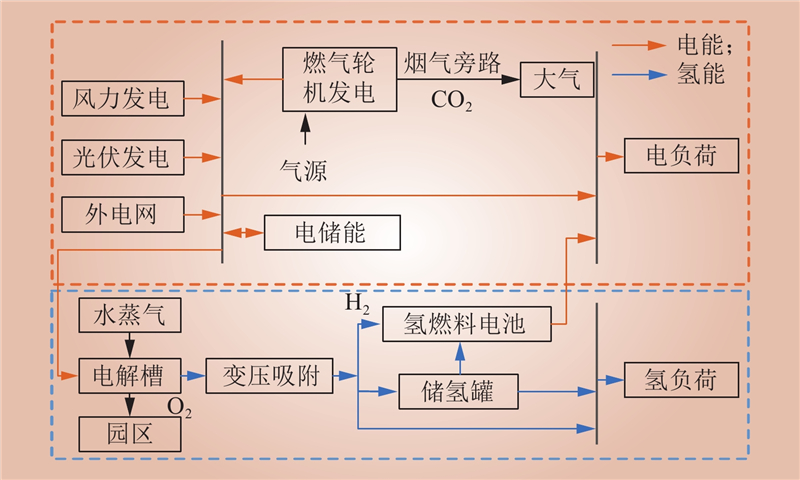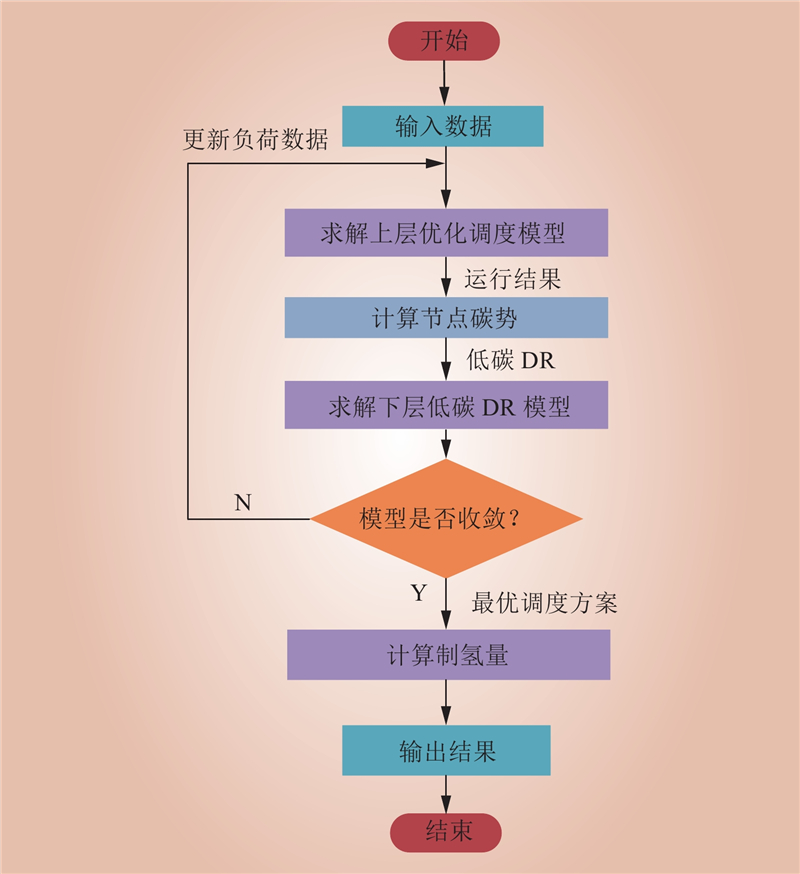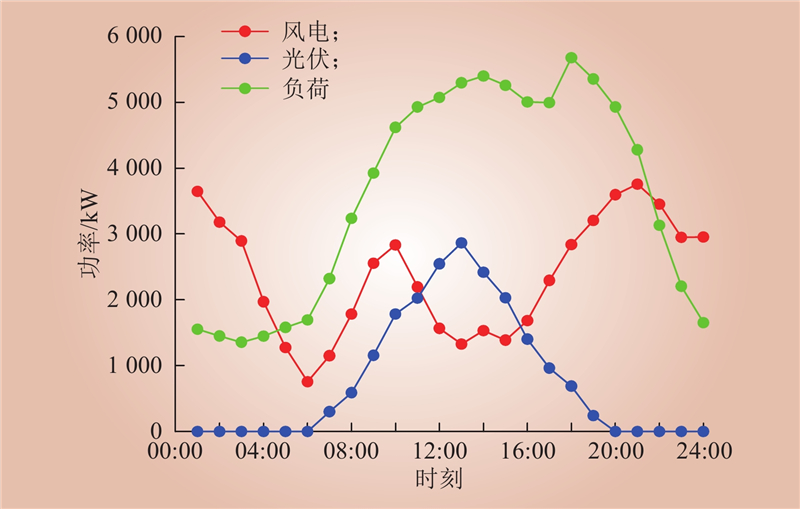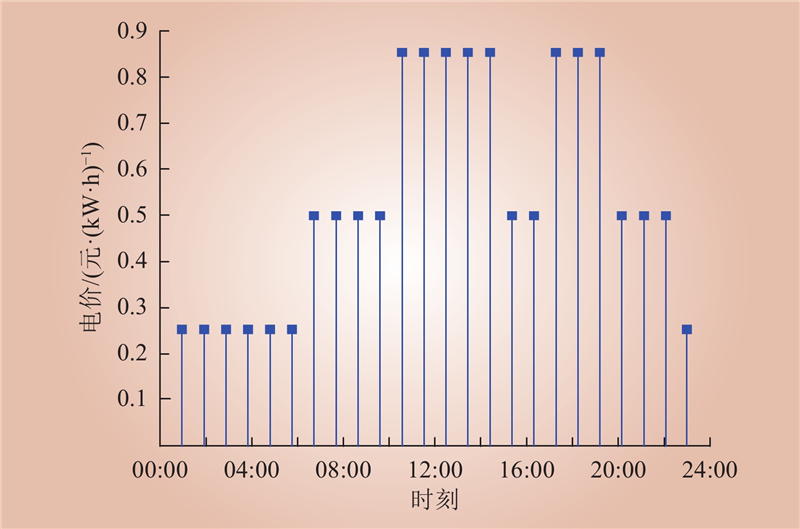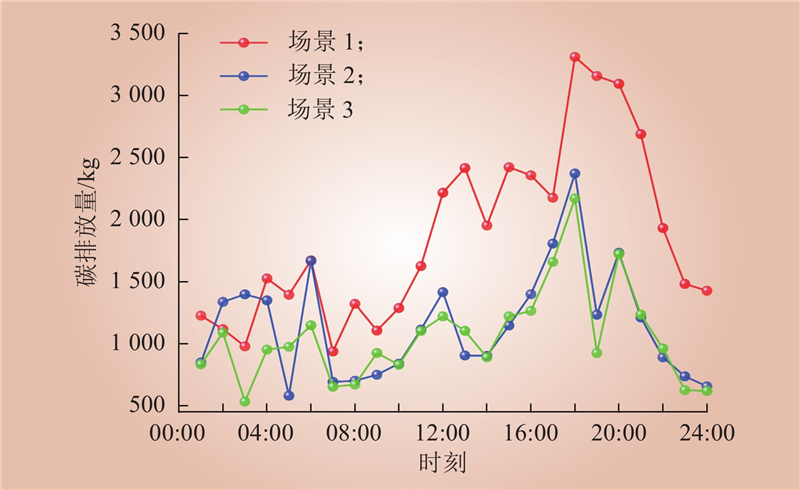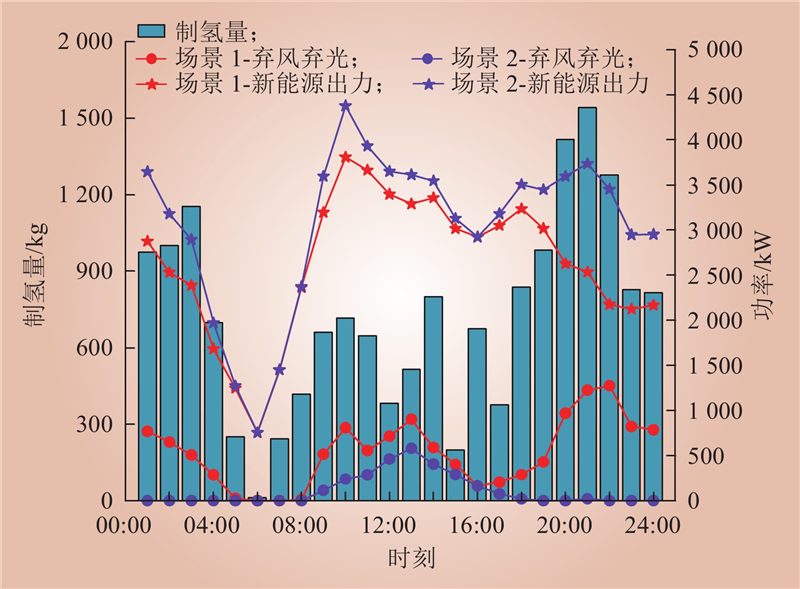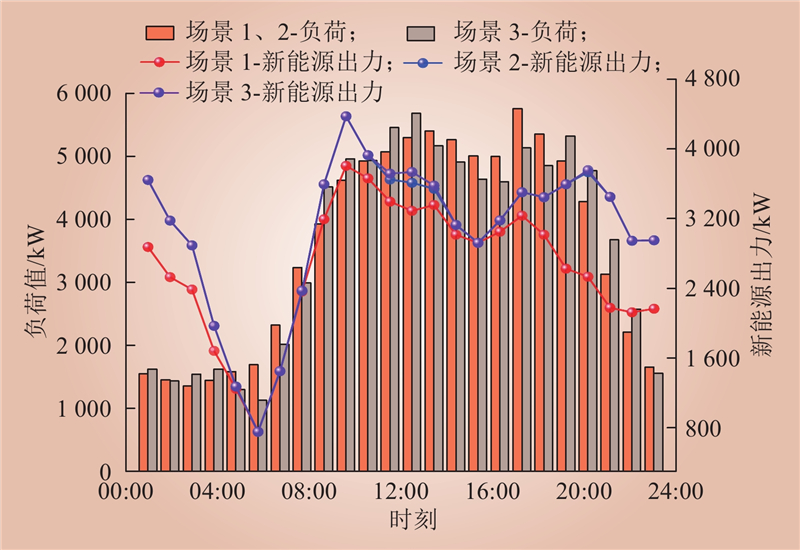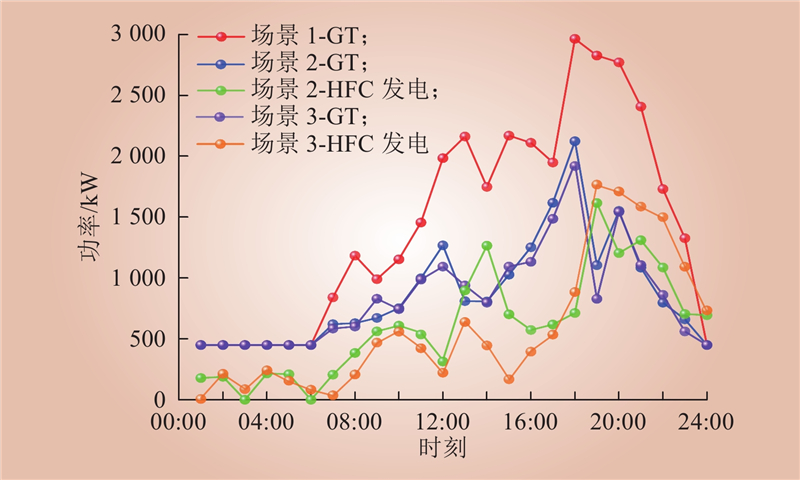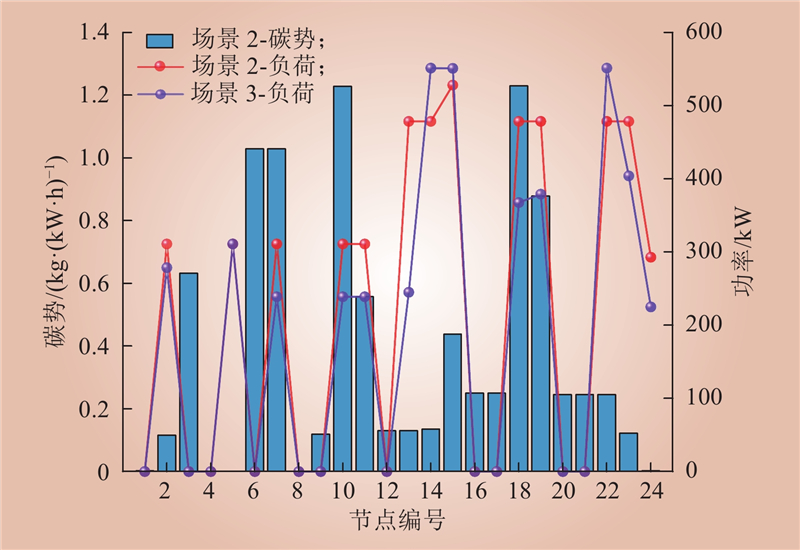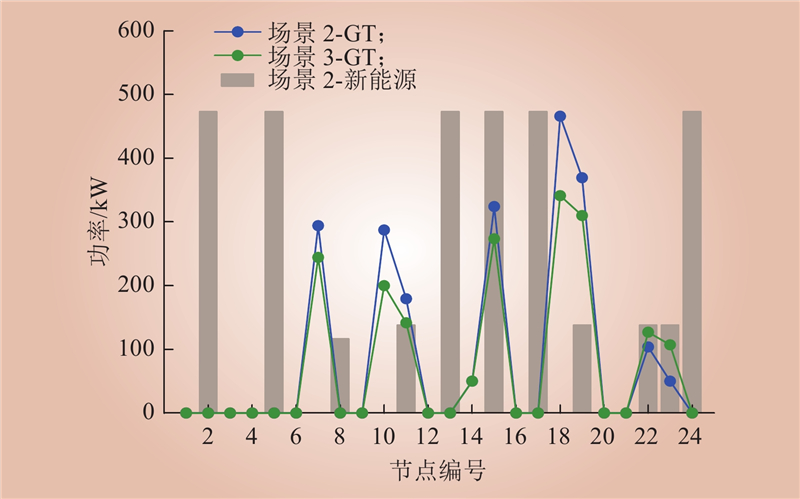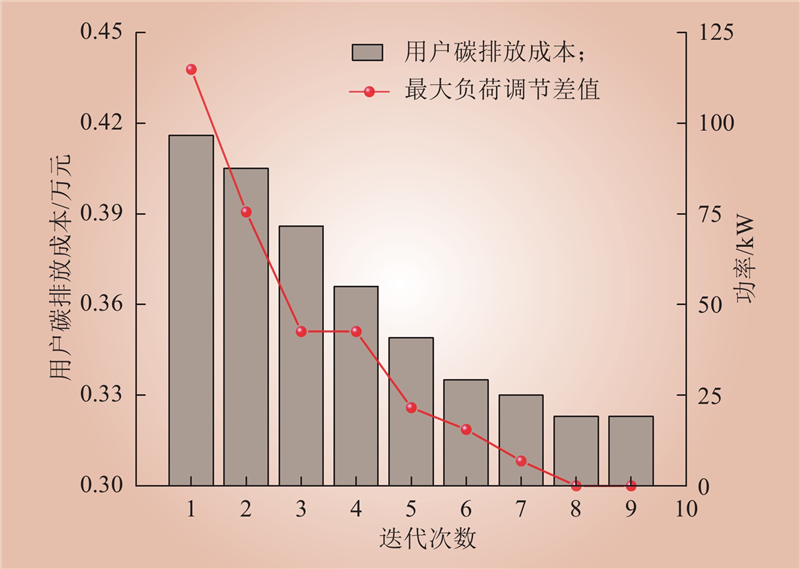| 1 |
XU J Z, YI Y Q. Multi-microgrid low-carbon economy operation strategy considering both source and load uncertainty: a Nash bargaining approach[J]. Energy, 2023, 263, 125712.
DOI
|
| 2 |
LI Z M, WU L, XU Y. Risk-averse coordinated operation of a multi-energy microgrid considering voltage/var control and thermal flow: an adaptive stochastic approach[J]. IEEE Transactions on Smart Grid, 2021, 12 (5): 3914- 3927.
DOI
|
| 3 |
张玉敏, 孙鹏凯, 吉兴全, 等. 考虑扩展碳排放流的综合能源系统低碳经济调度[J]. 电网技术, 2023, 47 (8): 3174- 3191.
|
|
ZHANG Yumin, SUN Pengkai, JI Xingquan, et al. Low-carbon economic dispatch of integrated energy system with augmented carbon emission flow[J]. Power System Technology., 2023, 47 (8): 3174- 3191.
|
| 4 |
张玉敏, 孙鹏凯, 孟祥剑, 等. 基于碳势-能源价格双响应的综合能源系统低碳经济调度[J/OL]. 电力系统自动化: 1–20[2023-08-28].https://kns.cnki.net/kcms/detail/32.1180.TP.20230828.0831.002.html.
|
|
ZHANG Yumin, SUN Pengkai, MENG Xiangjian, et al. Low-carbon economic dispatch of integrated energy system with dual response of carbon potential energy price[J/OL]. Automation of Electric Power Systems: 1–20[2023-08-28].https://kns.cnki.net/kcms/detail/32.1180.TP.20230828.0831.002.html.
|
| 5 |
YANG J J, DONG Z Y, WEN F S. A comparative study of marginal loss pricing algorithms in electricity markets[J]. IET Generation, Transmission & Distribution, 2021, 15 (3): 576- 588.
|
| 6 |
刘名扬. 考虑阶梯型碳交易的多能微网运行与规划研究[D]. 南昌: 南昌大学, 2022.
|
|
LIU Mingyang. Operation and planning of multi-energy microgrids considering ladder-type carbon trading mechanism[D]. Nanchang: Nanchang University, 2022.
|
| 7 |
ZHANG Y M, LI J R, JI X Q, et al. Optimal dispatching of electric-heat-hydrogen integrated energy system based on Stackelberg game[J]. Energy Conversion and Economics, 2023, 4 (4): 267- 275.
DOI
|
| 8 |
申泽渊, 赵海波, 李伟康, 等. 面向偏远地区低碳发展的风-光-沼-储综合能源微网多目标规划方法[J]. 太阳能学报, 2023, 44 (7): 71- 79.
|
|
SHEN Zeyuan, ZHAO Haibo, LI Weikang, et al. Multi-objective optimization method for low-carbon development of wind-solar-biogas-storage integrated energy microgrids in remote regions[J]. Acta Energiae Solaris Sinica, 2023, 44 (7): 71- 79.
|
| 9 |
LIU Y, JIANG Z P, XING Z X, et al. Economic and low-carbon island operation scheduling strategy for microgrid with renewable energy[J]. Energy Reports, 2022, 8, 196- 204.
|
| 10 |
周天睿, 康重庆, 徐乾耀, 等. 电力系统碳排放流的计算方法初探[J]. 电力系统自动化, 2012, 36 (11): 44- 49.
|
|
ZHOU Tianrui, KANG Chongqing, XU Qianyao, et al. Preliminary investigation on a method for carbon emission flow calculation of power system[J]. Automation of Electric Power Systems, 2012, 36 (11): 44- 49.
|
| 11 |
李姚旺, 张宁, 杜尔顺, 等. 基于碳排放流的电力系统低碳需求响应机制研究及效益分析[J]. 中国电机工程学报, 2022, 42 (8): 2830- 2842.
|
|
LI Yaowang, ZHANG Ning, DU Ershun, et al. Mechanism study and benefit analysis on power system low carbon demand response based on carbon emission flow[J]. Proceedings of the CSEE, 2022, 42 (8): 2830- 2842.
|
| 12 |
WAN T, TAO Y C, QIU J, et al. Internet data centers participating in electricity network transition considering carbon-oriented demand response[J]. Applied Energy, 2023, 329, 120305.
DOI
|
| 13 |
严金炜, 谭露, 刘念, 等. 基于碳流追溯的多微电网系统电碳耦合交易方法[J/OL]. 电网技术: 1–15[2023-10-28].https://doi.org/10.13335/j.1000-3673.pst.2023.0591
|
|
YAN Jinwei, TAN Lu, LIU Nian, et al. Electricity-carbon coupling trading for multi-microgrids system based on carbon flow tracing[J/OL]. Power System Technology: 1–15[2023-10-28].https://doi.org/10.13335/j.1000-3673.pst.2023.0591.
|
| 14 |
XIONG T L, LIN B W, YANG C, et al. A method for low-carbon dispatch of PEDF (photovoltaic, energy storage, direct current and flexibility) microgrid considering indirect carbon emissions[C]//2022 Asian Conference on Frontiers of Power and Energy (ACFPE). Chengdu, China. IEEE, 2022: 578–584.
|
| 15 |
LI B, LI J C. Probabilistic sizing of a low-carbon emission power system considering HVDC transmission and microgrid clusters[J]. Applied Energy, 2021, 304, 117760.
DOI
|
| 16 |
陈胜, 张景淳, 卫志农, 等. 面向能源转型的电-气-氢综合能源系统规划与运行[J]. 电力系统自动化, 2023, 47 (19): 16- 30.
|
|
CHEN Sheng, ZHANG Jingchun, WEI Zhinong, et al. Energy transition oriented planning and operation of electricity-gas-hydrogen integrated energy system[J]. Automation of Electric Power Systems, 2023, 47 (19): 16- 30.
|
| 17 |
袁铁江, 计力, 田雪沁, 等. 考虑燃料电池汽车加氢负荷的电-氢系统协同优化运行[J]. 电力系统自动化, 2023, 47 (5): 16- 25.
DOI
|
|
YUAN Tiejiang, JI Li, TIAN Xueqin, et al. Synergistic optimal operation of electricity-hydrogen systems considering hydrogen refueling loads for fuel cell vehicles[J]. Automation of Electric Power Systems, 2023, 47 (5): 16- 25.
DOI
|
| 18 |
郜捷, 宋洁, 王剑晓, 等. 支撑中国能源安全的电氢耦合系统形态与关键技术[J]. 电力系统自动化, 2023, 47 (19): 1- 15.
|
|
GAO Jie, SONG Jie, WANG Jianxiao, et al. Form and key technologies of integrated electricity-hydrogen system supporting energy security in China[J]. Automation of Electric Power Systems, 2023, 47 (19): 1- 15.
|
| 19 |
潘光胜, 顾钟凡, 罗恩博, 等. 新型电力系统背景下的电制氢技术分析与展望[J]. 电力系统自动化, 2023, 47 (10): 1- 13.
DOI
|
|
PAN Guangsheng, GU Zhongfan, LUO Enbo, et al. Analysis and prospect of electrolytic hydrogen technology under background of new power systems[J]. Automation of Electric Power Systems, 2023, 47 (10): 1- 13.
DOI
|
| 20 |
左冠林. 考虑低碳制氢的微网优化配置与经济运行研究[D]. 广州: 华南理工大学, 2022.
|
|
ZUO Guanlin. Research on optimal configuration and economic operation of microgrid considering low-carbon hydrogen production[D]. Guangzhou: South China University of Technology, 2022.
|
| 21 |
袁铁江, 杨洋, 李瑞, 等. 考虑源荷不确定性的氢能微网容量优化配置[J]. 中国电力, 2023, 56 (7): 21- 32.
|
|
YUAN Tiejiang, YANG Yang, LI Rui, et al. Optimized configuration of hydrogen-energy microgrid capacity considering source charge uncertainties[J]. Electric Power, 2023, 56 (7): 21- 32.
|
| 22 |
吉兴全, 赵国航, 于一潇, 等. 基于4E平衡的碳排放因素分解与峰值预测方法[J]. 高电压技术, 2022, 48 (7): 2483- 2494.
|
|
JI Xingquan, ZHAO Guohang, YU Yixiao, et al. Carbon emission peak prediction and factor decompose method based on 4E equilibrium[J]. High Voltage Engineering, 2022, 48 (7): 2483- 2494.
|
| 23 |
WANG M Q, YANG M, FANG Z, et al. A practical feeder planning model for urban distribution system[J]. IEEE Transactions on Power Systems, 2023, 38 (2): 1297- 1308.
DOI
|
| 24 |
董帅, 王成福, 徐士杰, 等. 计及网络动态特性的电-气-热综合能源系统日前优化调度[J]. 电力系统自动化, 2018, 42 (13): 12- 19.
DOI
|
|
DONG Shuai, WANG Chengfu, XU Shijie, et al. Day-ahead optimal scheduling of electricity-gas-heat integrated energy system considering dynamic characteristics of networks[J]. Automation of Electric Power Systems, 2018, 42 (13): 12- 19.
DOI
|
| 25 |
ZHANG Y D, DENG H, YANG J J, et al. Impacts of renewable portfolio standard on carbon emission peaking and tradable green certificate market: a system dynamics analysis method[J]. Frontiers in Energy Research, 2022, 10, 963177.
DOI
|



